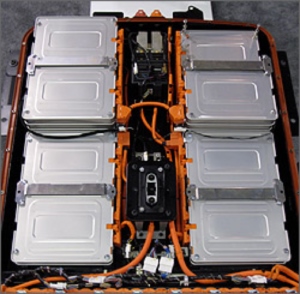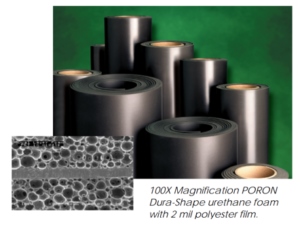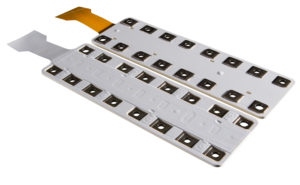
Published
by Rogers Corporation
Elastomeric Material Solutions
Twelve countries around the globe have set goals to end the sale of gas- and diesel-powered vehicles starting in 2040. This will significantly accelerate the uptake of electric vehicles (EVs) and hybrid vehicles (HEVs). It will also increase the need for improved battery management systems to monitor and control the high-voltage battery stacks, and for power semiconductor devices for battery management, on-board charging, infotainment, electric motors, and more.
For EVs and HEVs, the introduction of high-voltage, high-density batteries, and fast chargers increases heat generation in battery packs. Higher power densities allow for smaller and lower cost hybrid batteries. But battery manufacturers need to design for higher powers and higher densities using optimized cell chemistries and specialty materials.
Lithium-Ion
Li-ion batteries have high energy per unit mass relative to other electrical energy storage systems, as well as a high power-to-weight ratio, high energy efficiency, and good high-temp performance. But there are safety concerns, as witnessed by the Samsung Galaxy Note 7 smartphone recall. Li-ion based systems need to ensure they don’t overheat or malfunction, such as from thermal runaway – when a sequence of exothermic reactions takes place within a cell, leading to overheating and potentially resulting in an explosion. Also, they contain cobalt and nickel, which are costly and toxic.
Lithium-Sulfur
Li-S batteries pack two to three times more energy than their Li-ion counterparts. They’re also less prone to overheating, which means they don’t need the complex control systems that keep Li-ion batteries from erupting in flames when overcharged or overtaxed. Increased safety and the fact that sulfur is abundant and cheap means Li-S power packs would be much less expensive to produce than Li-ion batteries. Unfortunately, Li-S batteries don’t hold a charge for long.
Metal-Air
Iron-air batteries have been around for decades, but they suffered from extreme inefficiency, losing half their power to a side reaction that produces hydrogen. Researchers have reduced the loss to 4 percent, bringing the technology closer to practical use.
Redox Flow
Flow batteries are thought to be the answer for large-scale, grid storage. Car manufacturers are thinking about putting them in vehicles because they are headed for $100 per kWh and their size and weight might fit. They don’t age the way solid batteries do; there are no electrodes to break down over time. They’re also flexible. The solutions can undergo recharging—by a renewable energy source, for instance—or they can simply be replaced with fresh, fully charged solutions.
Solid-State
Solid-state batteries provide substantially higher energy than conventional Li-ion batteries that rely on liquid-based electrolytes. In fact, as much as two to three times more energy. Solid-state batteries can also lower costs due to the potential for eliminating many of the expensive safety features typically associated with Li-ion systems. But solid-state electrolytes are expensive to make…for now.
Specialized Materials for Batteries
Vibration Isolation
Batteries, especially those in vehicles, need to be packaged to absorb internal impact energy. PORON® polyurethane and BISCO® silicone materials‘ Compression Set Resistance (C-set) withstands collapse due to the stresses of compression and temperature over time. This extends the life of the battery by continuing to seal and absorbing shock.
Environmental Seals
Sensitive electronics need to be packaged to withstand the elements and function in all environments. Safety can be a concern as severe damage is possible – electrical shock or explosion – if a battery pack is not properly sealed. Gaskets based on BISCO® silicone materials seal the interface where a battery is plugged into an electrical grid and provide exceptional UV resistance and cold temperature flexibility. PORON® polyurethanes offer an economical alternative.
Power Electronics
In battery technology, semiconductors serve critical functions: boosting performance, reducing power losses, and optimizing thermal management.
Rogers’ ROLINX® busbars act as power distribution “highways.” These laminated busbars provide a customized power liaison for connecting battery cells or interconnecting between battery packs. The busbars can integrate both power and signal lines, including, for example, temperature measurement.
In IGBT and MOSFET power modules, substrates provide connections and cool components. curamik® ceramic substrates are able to carry higher currents, provide higher voltage isolation, and operate over a wide temperature range.
Tags:
Automotive & EV/HEV
Published on Jan 17, 2018



